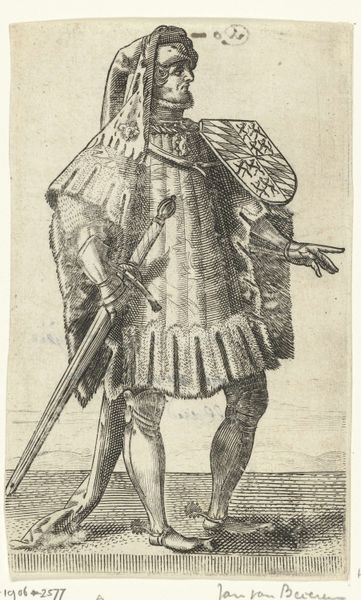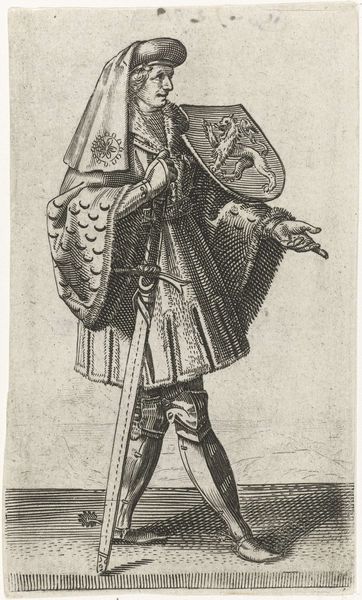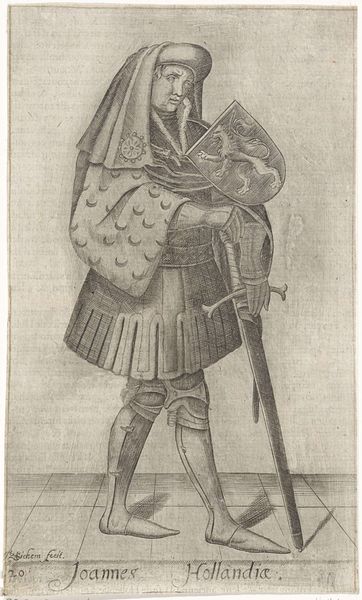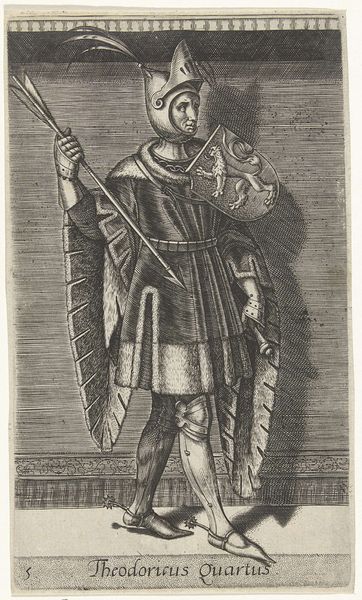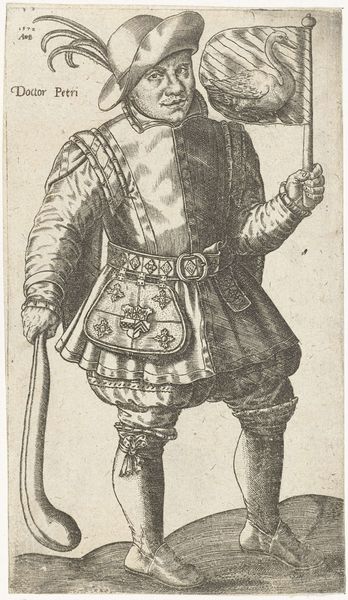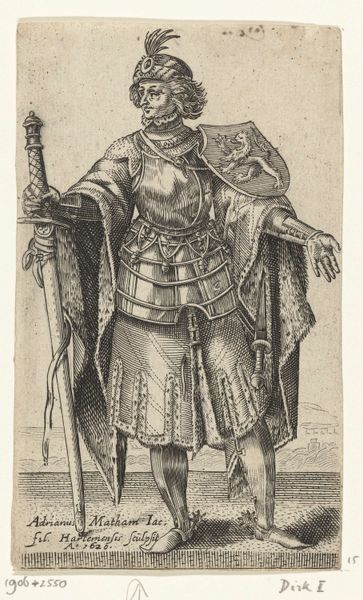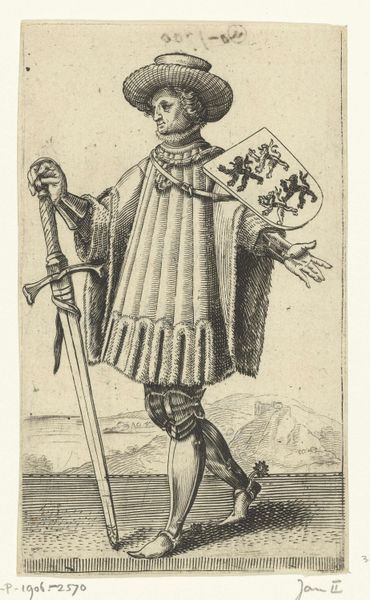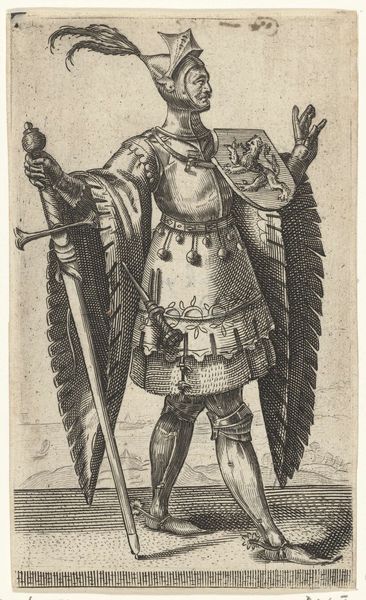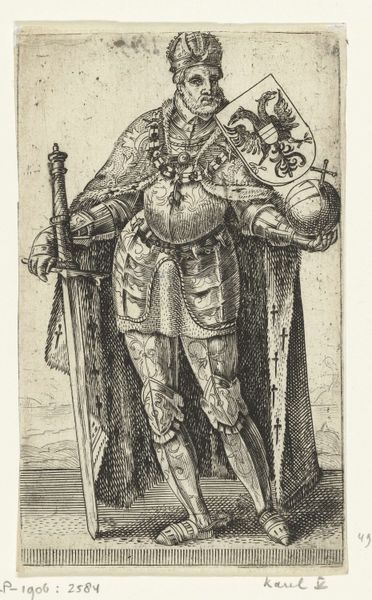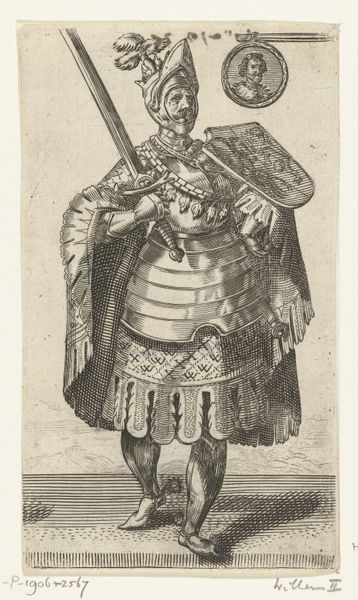
engraving
#
portrait
#
baroque
#
dutch-golden-age
#
old engraving style
#
figuration
#
history-painting
#
engraving
Dimensions: height 130 mm, width 80 mm
Copyright: Rijks Museum: Open Domain
Editor: So, this is Adriaen Matham’s "Portret van Dirk IV, graaf van Holland," an engraving from 1620. I am struck by the elaborate detail in the figure’s costume, and the contrast between his detailed rendering and the stark simplicity of the landscape. What do you see in the relationship between the figure and the ground? Curator: Note first the absolute dominance of line here. Matham's use of hatching and cross-hatching creates a highly textured surface, defining form and volume within the limitations of a monochrome medium. Ask yourself what effect does the redundancy have here? Why build so many layers? The ground’s flatness, emphasized by the horizontal lines, acts as a foil, drawing the eye irresistibly towards the figure. Editor: You make a great point about the lines. Would you say the costume serves as a barrier or point of entry into understanding his presence? Curator: I suggest you consider how the clothing—the elaborate cape, the helmet, the shield bearing a lion—functions structurally. Does it define or obscure? Consider its impact on the overall balance, how the lines of the costume interact with the implied lines of the figure's posture and gaze. It is designed to enhance the sitter’s heroic status, using details that build complexity while still allowing viewers to feel close to the human portrayed. Editor: I can see now how all the rich embellishment on the costume focuses my gaze. Thank you for highlighting that element! Curator: Indeed. Through formal analysis we unlock Matham’s technical facility, appreciate the structured representation, and realize this engraving encapsulates an aesthetic value that elevates form above pure likeness.
Comments
No comments
Be the first to comment and join the conversation on the ultimate creative platform.

